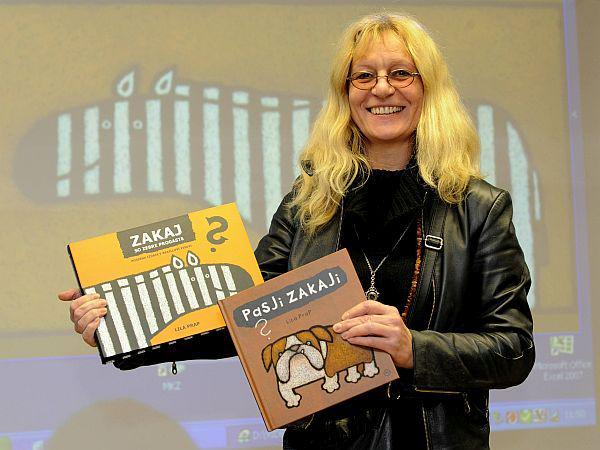
From Godzilla to Pokemon, Japanese illustration and animation has long been tremendously influential around the world. At the same time, outsiders have rarely managed to gain a foothold into the often closed world of Japanese popular art. One of the few foreign artists who have found success in Japan is the Slovenian illustrator Lila Prap.
Lilijana Praprotnik Zupančič was born in the town of Celje in 1955. She had trained to become and architect, and briefly worked for an architectural studio in Germany, where she helped to design a children’s hospital. She later found work as a graphical designer working for several Slovenian publications and the white goods manufacturer Gorenje. However, illustrating children’s books was her greatest passion, and she decided to pursue a career as a freelancer. Praprotnik Zupančič simplified her name to “Lila Prap” and soon published her first children’s books under her new nom-de-plume. Her stylized, always friendly animals quickly became a hit with children, while adults were impressed by the books’ educational value.
Since her early success, Prap’s books have been translated into various languages, and two of the titles were even published by Random House. Her books have been adopted by several Western European school systems; Prap has also been nominated for prestigious awards ranging from the Andersen Prize to the Astrid Lindgren Prize. In Slovenia, she received the prestigious Prešeren Fund Award in 2011.
However, it was a book titled simply Why? that brought Prap the most success. Featuring imaginative stories based on the questions that children frequently ask about animals, the book has been translated into various languages. Remarkably, it was met with unprecedented enthusiasm in Japan. Several Japanese bookstores even opened up entire sections devoted to Prap’s animals. (Some products even feature miniature maps of Slovenia to help children locate the homeland of the creatures’ creator.) The response impressed the broadcaster NHK, which decided to turn Prap’s stories into a series of cartoons - making her one of only a few European illustrators that have succeeded in the world of Japanese animation.
Meanwhile, Prap has continued to write stories that teach children everything from the use of slang words to the joy of learning foreign languages. She also creates poetry, theatrical performances, and radio plays, all based on the whimsy that has made her an international brand – and one of the most successful Slovenian illustrators of all time.

































































